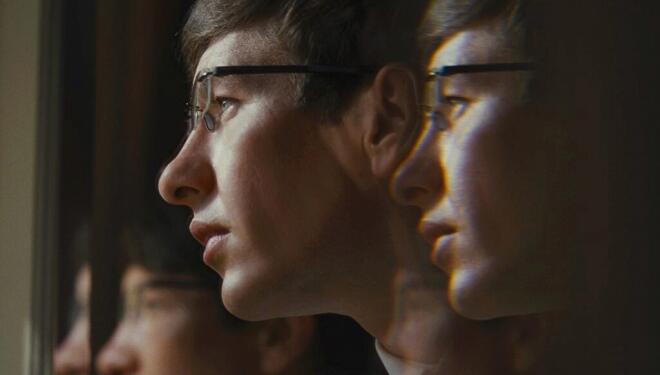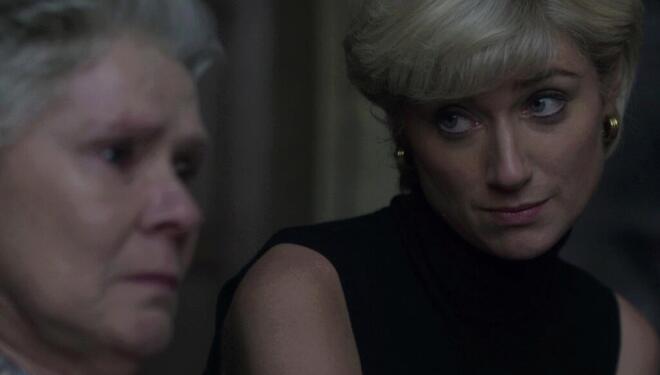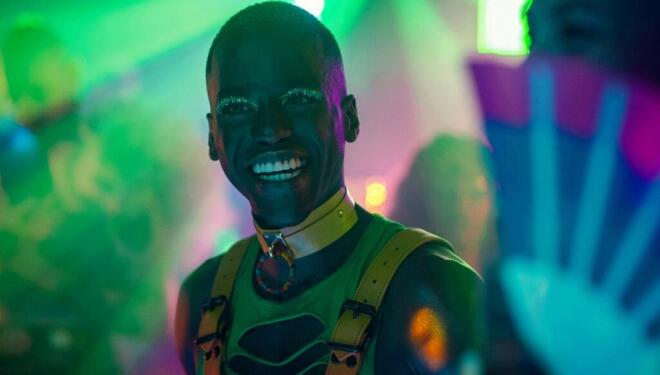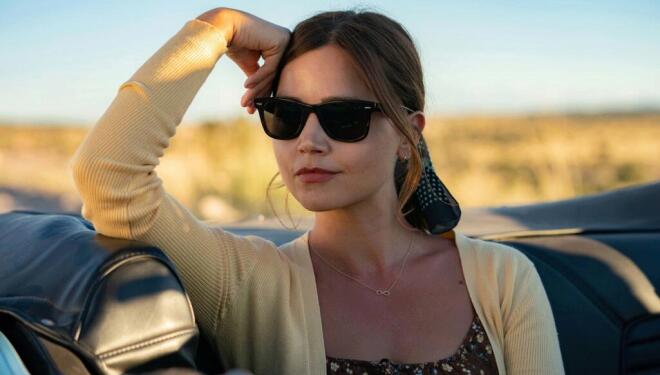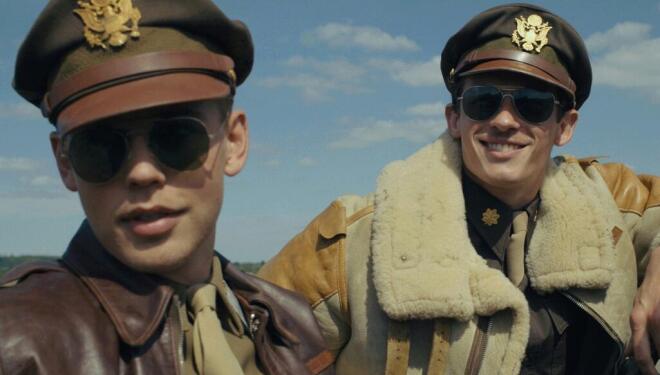
War dramas tend to slip across the spectrum of pro- and anti-war, depending on the conflict. Whereas the backdrops of Vietnam and the First World War attract scrutiny, WWII projects often lean toward the pro camp (with some incredible exceptions). With Saving Private Ryan (1998), Steven Spielberg crafted an intriguing compromise: showing the devastation of war, but using the future victory against the Third Reich to justify the means.
A similar flavour was captured in Band of Brothers – the 2001 miniseries exec-produced by Spielberg and Tom Hanks – and again in their latest WWII follow-up Masters of the Air. Instead of the gruelling conditions on the hostile ground of Nazi-occupied Europe, this nine-part series flies several thousand feet above: from the eagle-eyed perspective of the US Air Force. They swoop into probable death; anticipated by black smoke, engines aflame and German fighter planes shredding the pilots to pieces.
Film historian David Thomson recently denied the existence of anti-war films, claiming that ‘we go to war for the excitement’. That’s hard to deny when Masters, wedged in that difficult centre between pro and anti, loads some of the most exhilarating action scenes this critic has seen in years – especially on television.

Barry Keoghan and Austin Butler as Lt Curtis Biddick and Major Gale 'Buck' Cleven. Photo: Apple
Band
of Brothers writer John
Orloff takes charge here, adapting the non-fiction book by Donald L Miller. The chief
focus is on the partnership between Major Gale 'Buck' Cleven (Elvis
riser Austin Butler) and Major John ‘Bucky’ Egan (Callum Turner in perhaps his biggest
TV role to date) of the 100th Bomb Group in 1943. Like Major Winters,
Buck doesn’t imbibe and takes a calm, considered approach with thick moral
scruples and a face chiselled for Hollywood. Bucky is more loose and free and
drunk, but no less dutiful.
Other characters drift in and out of the narrative, covering a wide ensemble with many perspectives on war. Strangely, despite navigator Lt Harry Crosby (a wonderfully sympathetic Anthony Boyle) being something of a side character, he also resembles a transformative protagonist. Buck and Bucky are old-school heroes, whereas Harry holds more nuance. Barry Keoghan, fresh from his musical nakedness in Saltburn, also pops up as the spirited Lt Curtis Biddick.

Anthony Boyle as Lt Harry Crosby. Photo: Apple
Initially,
Orloff balances the episodes between chatting at the Thorpe Abbotts airbase in
East Anglia and soaring in a ‘Flying Fortress’ of B-17s toward the continent. During
the day, too; contrary to the RAF’s nighttime approach. Stuck in this
claustrophobic metal tube, miles in the air, exposed in every direction, these
men fulfil their missions and somehow ignore the screaming tension that swarms
every move they make. These sequences are excellently composed and
inescapably vehement, punctuated with blood and fire.
Some episodes give you a break from the bullets and bombs: taking weekend passes to the countryside as well as to London and Oxford – meditating on the nature of war, the adrenaline of death, and men’s reluctance to talk about trauma. There are also funny frictions between the US Air Force and the RAF. The two-dimensional Brits don’t come across that well, but their anti-American pomposity is easy to believe.
Orloff also covers the danger of abandoning ship in Western Europe, American crew members scattering with uncertain futures and geographies. This revs up a main story shift that involves Stalag Luft III, the POW camp immortalised by The Great Escape (1963). And mirroring Orloff’s Band of Brothers episode Why We Fight, the series also touches on the devastation of the Holocaust in brief but horrific detail.

Ncuti Gatwa as 2nd Lt Robert H Daniels. Photo: Apple
There
are imperfections here and there. Orloff doesn’t seem too engaged with the
involvement of Black Americans in the war effort, especially transparent in the
casting of Doctor Who star Ncuti Gatwa who’s only given a few cursory
lines. The heavy-handed union of white and Black soldiers is also hard to take too seriously considering segregation in the US at the time (the
practice of which inspired Hitler's Nuremberg Laws). Bel Powley also turns up
occasionally as an enigmatic but amusing figure, showing the importance of women
in the conflict. But compare Masters to the superior acuity of Peter Bowker’s
World on Fire, and these inclusions feel woefully underdeveloped.
Regardless, Masters plunges into the altitudinous world of real soldiers who gave their lives and minds to fight fascism. Even the sentimental, star-spangled propaganda – sometimes creating the impression that they’re the only country who fought in WWII – grows on you, infects your emotions. You cheer their victories and survivals in a chaotic existence, pregnant with the gloom of death. Maybe the War in Ukraine and escalations in the Middle East raise these feelings, the dread of a Third World War always mushroom-clouding in the mind’s horizon. Series like Masters of the Air remind you why some causes are worth fighting for.
Masters of the Air is available on AppleTV+ from Friday 26 January.
| What | Masters of the Air, AppleTV+ review |
| When |
26 Jan 24 – 01 Jan 25, ON APPLE TV+ |
| Price | £n/a |
| Website | Click here for more information |


